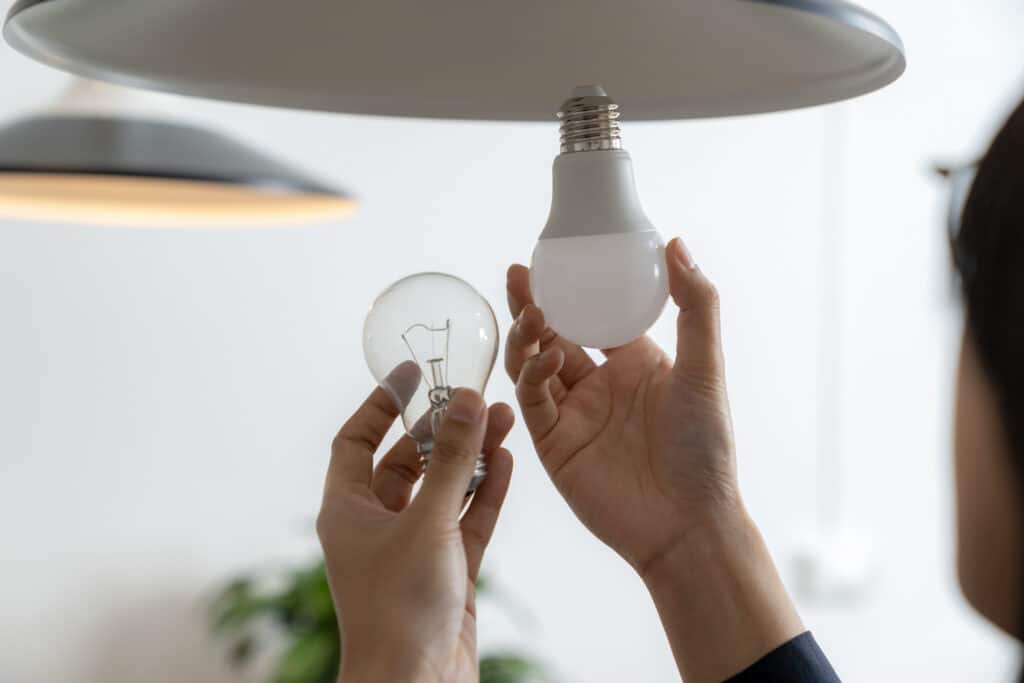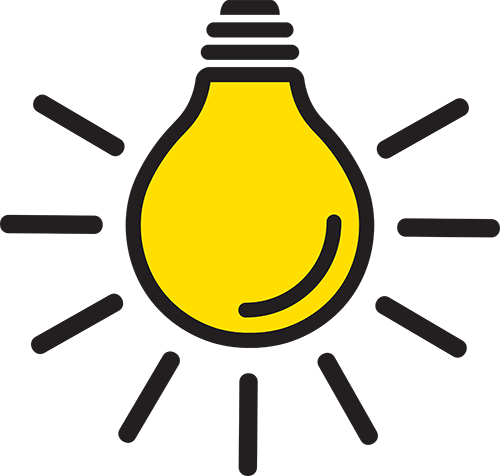The Benefits of LED Conversion in Home Lighting

In recent years, LED conversion has emerged as a game-changer in the realm of home lighting. This innovative approach not only enhances the ambiance of your living spaces but also promises significant energy savings. With homeowners in Florence, SC, increasingly leaning towards sustainable living, the shift towards LED lighting is becoming more prevalent. It’s a step that aligns with both environmental stewardship and economic savvy.
The benefits of LED conversion extend beyond mere energy efficiency. These modern lighting solutions offer a longer lifespan compared to traditional incandescent bulbs, translating to fewer replacements and reduced waste. For residents in Winona, SC, where eco-friendly practices are valued, this aspect of LED lighting is particularly appealing. It’s a practical choice that supports both the planet and your pocket.
Moreover, LED conversion is synonymous with cost savings. By adopting LED lighting, households can see a noticeable reduction in their electricity bills. This is because LEDs consume significantly less power for the same level of brightness, making them an economical option for lighting up your home. The initial investment quickly pays off, making it an attractive proposition for budget-conscious families.
Lastly, the quality of light provided by LEDs is superior to that of traditional lighting options. They offer a wide range of colors and brightness levels, allowing for customization to suit any mood or setting. This feature enhances the comfort and aesthetics of homes in both Florence, SC, and Winona, SC, making LED conversion a popular choice among homeowners seeking to improve their living environment. The transition to LED lighting not only benefits your wallet and the planet but also elevates the quality of your indoor spaces.
Understanding LED Conversion in Home Lighting
Understanding LED conversion in home lighting involves recognizing how it works and its impact on energy consumption. Essentially, LED lights convert electricity into light more efficiently than traditional bulbs. This means they use less power to produce the same amount of brightness. For homeowners in Florence, SC, making the switch to LED lighting can significantly reduce energy usage, aligning with both environmental goals and household budgeting.
LED conversion also plays a crucial role in minimizing carbon footprint. Since LED lights are more energy-efficient, they contribute to lower carbon emissions. This is particularly important in areas like Winona, SC, where there is a growing emphasis on sustainable living. By opting for LED lighting, residents not only save on energy costs but also take a step towards a greener planet.
Another aspect of LED conversion is the durability and longevity of LED bulbs. Unlike traditional lighting options, LEDs are designed to last much longer, which means they don’t need to be replaced as often. This durability translates to less waste and more savings over time. For households in Florence, SC, the long-term benefits of installing LED lights are clear, offering both environmental and economic advantages.
Finally, the process of converting to LED lighting is simpler than many homeowners might think. With a wide range of products available, finding the right LED solutions for any home is straightforward. Residents in Winona, SC, can easily find LED bulbs that fit their existing fixtures, making the transition smooth and hassle-free. This ease of conversion, combined with the numerous benefits, makes LED lighting an attractive option for enhancing home lighting systems.

Photo from iStock – Credit: Virojt Changyencham
The Environmental Benefits of Switching to LED
Switching to LED lighting brings significant environmental benefits, a fact that resonates well with the eco-conscious community in Florence, SC. By opting for LED conversion, homeowners play a crucial role in reducing energy consumption. This shift not only aligns with sustainable living practices but also contributes to the broader goal of conserving natural resources. It’s a positive step towards making a lasting impact on our planet’s health.
LED lights are known for their efficiency, which directly translates to lower carbon emissions. In cities like Winona, SC, where environmental awareness is growing, making the switch to LED can significantly decrease the carbon footprint of each household. This is because LEDs require less electricity to operate, thus reducing the demand on power plants and, consequently, the amount of greenhouse gases released into the atmosphere.
Moreover, the durability of LED bulbs means less frequent replacements, leading to reduced waste. Unlike traditional bulbs that end up in landfills after burning out, LEDs last much longer, which contributes to less environmental pollution. Homeowners in Florence, SC appreciate this aspect, as it not only lowers their long-term costs but also supports waste reduction efforts.
Finally, the process of LED conversion itself supports sustainable practices. By retrofitting existing fixtures with LED bulbs, residents in Winona, SC can upgrade their home lighting without the need for entirely new installations. This approach minimizes waste and maximizes the use of existing resources, further emphasizing the environmental benefits of switching to LED lighting. It’s a simple yet effective way to contribute to a healthier planet.
How LED Conversion Leads to Significant Cost Savings
Embracing LED conversion in your home not only benefits the environment but also leads to significant cost savings. In Florence, SC, residents who switch to LED lighting can see a noticeable decrease in their electricity bills. This is because LED bulbs use less energy to produce the same amount of light compared to traditional bulbs. Over time, the savings from lower energy consumption can add up, making LED conversion a smart financial decision.
The initial cost of LED bulbs might be higher than that of traditional lighting options, but their long lifespan means they don’t need to be replaced as often. Homeowners in Winona, SC, find that they purchase fewer bulbs over time, contributing to the cost-effectiveness of LED conversion. This durability not only saves money but also reduces the hassle of frequent replacements, offering a convenient solution for busy households.
Moreover, LED lights are designed to be more efficient, directly impacting your home’s energy usage. By consuming less power, these bulbs help lower the overall demand for electricity. This reduction in energy consumption is particularly beneficial in areas like Florence, SC, where households are looking for ways to cut costs and live more sustainably.
Finally, the adaptability of LED lighting allows for a tailored approach to home illumination. Residents in Winona, SC, can choose from a variety of LED options to match their specific lighting needs, further optimizing their energy use and maximizing savings. Whether it’s adjusting brightness or selecting specific color temperatures, LED conversion offers the flexibility to enhance your home’s ambiance while keeping costs down.
Comparing LED Lights with Traditional Lighting Options
When comparing LED lights to traditional lighting options, the advantages of LED conversion become even more apparent. LEDs offer unparalleled energy efficiency, meaning they require less electricity to illuminate your home in Florence, SC. This efficiency not only contributes to lower utility bills but also reduces the strain on our environment. As a result, homeowners who opt for LED lighting enjoy both financial and ecological benefits.
Traditional bulbs, such as incandescent and halogen options, have a shorter lifespan than LED lights. This means they need to be replaced more frequently, leading to higher costs and more waste over time. In contrast, LED bulbs last significantly longer, which diminishes the need for constant replacements. Residents in Winona, SC, find this aspect of LED conversion particularly appealing, as it offers a hassle-free lighting solution.
Furthermore, LED lights are known for their superior performance in terms of light quality and control. Unlike traditional lighting, LEDs can be dimmed to suit any mood or atmosphere, providing homeowners with customizable lighting options. This flexibility allows for a more personalized lighting experience, enhancing the ambiance of any room without increasing energy consumption.
Lastly, the transition to LED lighting is a straightforward process that significantly impacts energy conservation efforts. By replacing outdated bulbs with efficient LED alternatives, households contribute to a reduction in global energy demand. This shift not only supports the sustainability goals of communities in Florence, SC, and Winona, SC but also sets a precedent for responsible energy use in homes across the country.
The Role of LED Conversion in Enhancing Home Aesthetics
LED conversion does more than just save energy and money; it also significantly enhances the aesthetic appeal of homes in Florence, SC. By adopting LED lighting, homeowners can enjoy a variety of lighting colors and intensities that traditional bulbs cannot offer. This flexibility allows for the creation of unique atmospheres in each room, tailoring the ambiance to match specific moods or activities. As a result, LED lights play a crucial role in elevating the overall look and feel of a home.
In addition to offering a spectrum of colors, LED lighting provides superior brightness and clarity, making spaces appear more vibrant and inviting. Homeowners in Winona, SC, appreciate the ability to highlight architectural features or artwork with precise, high-quality lighting. This aspect of LED conversion not only improves the visual comfort of living spaces but also showcases the homeowner’s personal style and decor.
Furthermore, the directional lighting capabilities of LEDs allow for focused illumination where it’s needed most, without wasting light in unnecessary areas. This targeted approach to lighting enhances both the functionality and aesthetics of a space, ensuring that work areas are well-lit while creating cozy, dimly lit corners for relaxation. It’s a practical yet beautiful solution that suits the diverse needs of modern households.
Lastly, the process of upgrading to LED lighting is a simple yet impactful way to refresh the look of a home without the need for major renovations. For residents in both Florence, SC, and Winona, SC, LED conversion represents an easy step towards a more stylish and energy-efficient home. By improving both the appearance and ambiance of their living spaces, LED lights offer a smart and attractive upgrade for any home.
Easy Steps for Implementing LED Conversion at Home
Embarking on LED conversion at home begins with evaluating your current lighting setup. Identify which fixtures and bulbs are prime candidates for replacement. This initial step ensures a focused approach, allowing homeowners in Florence, SC, to prioritize areas that will benefit most from enhanced lighting and energy savings. It’s a strategic move that sets the stage for a smoother transition.
Next, researching the various types of LED bulbs available is crucial. LEDs come in different shapes, sizes, and color temperatures, offering a range of options to suit any room’s ambiance. For residents in Winona, SC, selecting the right LED bulbs can transform the feel of their space, making it warmer or more inviting. This step underscores the importance of matching LED lighting to personal preferences and the specific needs of each room.
Once the appropriate LED bulbs have been chosen, the actual replacement process can commence. It’s a straightforward task that most homeowners can do without professional help. By simply swapping out old bulbs for new LEDs, you immediately start reaping the benefits of better lighting and lower energy consumption. This DIY aspect of LED conversion appeals to those looking to make impactful home improvements without the need for extensive renovations.
Finally, after installing LED bulbs, monitoring your energy usage and savings becomes an enlightening part of the process. Homeowners often notice a significant reduction in their electricity bills, a tangible reward for their efforts. This not only validates the decision to switch to LED but also encourages further exploration of energy-efficient solutions in the home. It’s a satisfying conclusion to a journey that enhances both the comfort and sustainability of your living environment.
Long-Term Advantages of LED Lighting for Homeowners
Exploring the long-term advantages of LED conversion reveals a host of benefits that extend well beyond the initial energy savings. Homeowners in Florence, SC, find that their decision to switch to LED lighting pays dividends for years to come. Not only do LEDs consume less electricity, but their extended lifespan also means that the need for replacements is significantly reduced. This longevity is a key factor in minimizing the environmental impact of home lighting.
In addition to durability, LED lights maintain their brightness and efficiency over time, unlike traditional bulbs that may dim or burn out quickly. Residents in Winona, SC, appreciate not having to frequently change bulbs, which is both convenient and cost-effective. The consistent performance of LED lighting ensures that homes remain brightly lit without the extra effort or expense. This reliability is one of the reasons why LED conversion is becoming increasingly popular among homeowners seeking practical and sustainable lighting solutions.
Furthermore, LED conversion contributes to a healthier home environment. LEDs do not contain hazardous materials, such as mercury, which are found in some traditional bulbs. This makes them a safer choice for households in Florence, SC, and reduces the risk of contamination should a bulb break. The absence of harmful substances in LED lights aligns with the growing trend towards healthier, eco-friendly home improvements.
Finally, the adaptability of LED technology allows for smart home integration, offering homeowners in Winona, SC, enhanced control over their lighting systems. From adjusting brightness to changing colors, LEDs can be easily managed via smartphones or voice-activated devices. This level of customization not only improves the functionality of home lighting but also adds a modern touch to the living space. As technology advances, the compatibility of LED lights with smart home systems represents a forward-thinking approach to home lighting.
Addressing Common Myths About LED Conversion
Despite the growing popularity of LED conversion, some misconceptions still exist, deterring homeowners from making the switch. One common myth is that LED lighting offers a colder, less inviting light compared to traditional bulbs. However, LED technology has advanced significantly, providing a wide range of color temperatures that can create warm and cozy atmospheres in homes in Florence, SC, just as well as any incandescent bulb could.
Another myth suggests that LED conversion is costly and not worth the investment. While it’s true that LED bulbs generally have a higher upfront cost, their long lifespan and energy efficiency result in substantial savings over time. Homeowners in Winona, SC, quickly discover that the initial expense pays off, as they save on both replacement bulbs and electricity bills, debunking the myth of high costs.
There’s also a misconception that LED lights are not as bright as traditional lighting options. This couldn’t be further from the truth. LEDs are capable of providing bright, clear light, and their intensity can easily be adjusted to suit any room’s needs. This flexibility ensures that every corner of your home can be illuminated exactly how you want it, challenging the notion that LED lighting compromises on brightness.
Lastly, some believe that LED conversion requires complicated installations and special fixtures. In reality, many LED bulbs are designed to fit into existing fixtures, making the switch straightforward and hassle-free. This ease of installation encourages more residents in Florence, SC, and beyond to embrace LED lighting, enjoying the benefits of improved energy efficiency and lighting quality without the need for extensive renovations.

Photo from iStock – Credit: Pakorn Supajitsoontorn
Frequently Asked Questions
What is LED Conversion?
LED conversion involves switching traditional light bulbs to LED technology in your home. This process not only enhances energy efficiency but also leads to significant cost savings. With LEDs, you enjoy brighter, more quality lighting that lasts longer. It’s a smart choice for homeowners looking to upgrade their lighting systems.
How does LED Conversion save energy?
LED conversion reduces energy use by using less power to produce the same amount of light. Unlike traditional bulbs, LEDs convert most of the energy into light, not heat. This efficiency means lower electricity bills for homeowners. Over time, the savings from reduced energy consumption can be significant.
What are the benefits of LED lighting?
LED lighting offers numerous advantages for homeowners. It shines brighter and lasts longer than traditional bulbs, ensuring homes are well-lit and inviting. By opting for LED conversion, individuals enjoy reduced energy bills due to the efficiency of these bulbs. Furthermore, this choice supports a greener environment by cutting down on energy consumption and waste.
Can LED lights improve home value?
Yes, LED lights can indeed boost a home’s value. Upgrading to LED lighting makes a home more attractive to potential buyers. It shows a commitment to energy efficiency and modern living. This can lead to a higher selling price and a quicker sale.
How long do LED lights last?
LED lights boast an impressive lifespan, often lasting up to 25,000 hours or more. This durability means homeowners can enjoy years of quality lighting without frequent replacements. Compared to traditional bulbs, LEDs stand out for their longevity, reducing both waste and maintenance costs. Opting for LED conversion is a smart move for long-term savings and environmental sustainability.
















